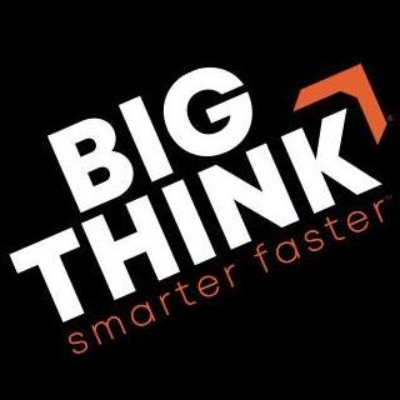TOPIC
Neurodiversity
Neurodiversity is the idea that while some ways of processing information are more typical, there is validity and value in alternate patterns of neurological function that don’t need to be “cured,” but rather accommodated. There are many different trait groupings that can be considered neurodivergent, from autism and ADHD to dyslexia and synesthesia. While our neurodivergent traits can lend us a unique and deeply emotional lens through which we view the world, they can pose mental, emotional, and physical challenges in how we move through a society designed for people who think about, interact with, and interpret visual, verbal, and sensory information differently than we do. We are often caught in the tension between accepting and validating ourselves and searching out tools and strategies to better meet the expectations of those around us. Centering ourselves begins with recognizing that our brains aren’t “wrong,” just different.
FILTER
CLEAR ALL
BY TOPIC
BY TEACHER
BY TYPE
FILTER

TOPIC
- Parenting (148)
- Emotional and Mental Health (141)
- Young Adult Well-Being (132)
- Communication Skills (126)
- Academic Struggles (123)
- Child’s ADD/ADHD (110)
- Self-Discovery (106)
- Connection (101)
- Access to Education (100)
- Cognition (95)
- Mental Health Challenges (83)
- Child’s Emotional Growth (82)
- Identity (81)
- Offering Support to Others (80)
- Imagination and Creativity (80)
- Depression (80)
- Self-Acceptance (78)
- LGBTQIA Well-Being (77)
- Social Justice (74)
- Child’s Challenging Behavior (74)
- OCD (71)
- Memory (70)
- Decision Making (69)
- Transitions (69)
- BIPOC Well-Being (69)
- Setting Limits and Boundaries (69)
- Asking for Help (68)
- Managing Energy (68)
- Confidence (68)
- Criticism and Rejection (68)
- Gender Identity (68)
- Resilience (68)
- Activism/Service (67)
- Talk Therapy (67)
- Burnout (67)
- Time Management (66)
- Mentoring (66)
- Child’s Anxiety (66)
- Digital Life (65)
- Self-Worth (65)
- Honoring Emotion (65)
- Self-Reflection Practices (65)
- Child Defiance (65)
- Suicide (64)
- Inner Strengths (64)
- Grief (64)
- Gratitude (64)
- Child’s Social Media Addiction (64)
- Problem Solving (63)
- Play (63)
- Search for Purpose (63)
- Curiosity (62)
- Child Depression (61)
- Relationship Challenges (59)
- Family Dynamics (58)
- Optimism (58)
- Cognitive Psychology (56)
- Family Therapy (54)
- Social Anxiety (53)
- Relationship with Money (53)
- Failure (51)
- Trauma (51)
- Genetics (48)
- Psychology (48)
- Synesthesia (47)
- Romantic Relationships (46)
- Finding Meaning (46)
- Facing Own Death (46)
- Existentialism (46)
- Self-Pressure (45)
- Anxiety (45)
- Motivation (44)
- Goal Setting (43)
- Neuropsychology (43)
- Belonging (42)
- Imposter Syndrome (40)
- Self-Limiting Beliefs (40)
- Growth Mindset (40)
- Empathy (38)
- Focus (38)
- Epigenetics (37)
- Social Psychology (37)
- Child’s Trauma (33)
- Friendship (32)
- Life Challenges (32)
- Stress Management (30)
- Bullying (30)
- Traumatic Grief (29)
- Neuroscience (29)
- Disabled Well-Being (27)
- Highly Sensitive People (27)
- Unconscious Bias (24)
- Relationship with Time (23)
- Work Challenges (23)
- Masculine/Feminine Dynamics (22)
- Male Friendship (22)
- Habits of Mind (19)
- Self-Reliance (18)
- Self-Esteem (17)
- Leadership (15)
- Living as an Empath (15)
- Black Well-Being (14)
- Collaboration (14)
- Self-Development (14)
- Marriage (14)
- Creative Well-Being (13)
- Social Presence (13)
- Doubt (12)
- Women’s Well-Being (12)
- Emotional Intelligence (EQ) (12)
- Perception (11)
- Self-Care (11)
- Memoir (10)
- Financial Instability (9)
- Entrepreneurship (9)
- Productivity (9)
- Intimacy (9)
- Self-Actualization (9)
- Speaking Your Truth (7)
- Challenges with Teens (7)
- Mindfulness (7)
- Adaptability (7)
- Authenticity (7)
- Family Acceptance (6)
- Transgender Well-Being (6)
- Work Relationships (6)
- Sex (6)
- Self-Mastery (6)
- Self-Expression (5)
- Misophonia (5)
- Patience (5)
- Animal Connection (5)
- Caregiver Well-Being (4)
- Self-Discipline (4)
- Racial Identity (4)
- Athlete Well-Being (4)
- Inner Life (4)
- Nonbinary Well-Being (4)
- Acceptance (4)
- Social Responsibility (4)
- Trauma Healing (4)
- Fellowship and Community (4)
- Female Friendship (4)
- Household Labor (4)
- Fiction (3)
- Intuition (3)
- Habit Formation (3)
- Brain Health (3)
- Grit (3)
- Work Ethic (3)
- LGBTQIA Relationships (3)
- Shame (3)
- New Relationships (3)
- Mindfulness Meditation (3)
- Meditation (3)
- Human Potential (3)
- Discrimination (3)
- Consciousness (3)
- Cognitive Behavioral Therapy (3)
- Fatigue (2)
- Co-Parenting (2)
- Intention (2)
- Physical Health (2)
- Vulnerability (2)
- Peak Performance (2)
- Self-Control (2)
- Body Image (2)
- Positive Thinking (2)
- Self-Compassion (2)
- Empowerment (2)
- Science and Spirituality (2)
- Latinx Well-Being (2)
- Sexuality (2)
- Rest (2)
- PTSD (2)
- Physical Therapy (2)
- Negative Self-Talk (2)
- Mindfulness Practices (2)
- Loneliness (2)
- Healing Approaches (2)
- Eating Disorders (2)
- Disconnection (2)
- Passion (2)
- Courage (2)
- Animal Welfare (2)
- Animal Communication (2)
- Inspiration (1)
- Performance Anxiety (1)
- Raising Daughters (1)
- Kids and Sports (1)
- Regret (1)
- Unfulfilled Career (1)
- Performance Pressure (1)
- Conflict Resolution (1)
- Art Therapy (1)
- Presence (1)
- Sexual Health (1)
- Willpower (1)
- Men’s Well-Being (1)
- Motherhood (1)
- Affirmations (1)
- Interdependence (1)
- Storytelling (1)
- Racism (1)
- Community Healing (1)
- Kindness (1)
- Happiness (1)
- Addiction Recovery (1)
- Endurance (1)
- LGBTQIA Sexuality (1)
- Shared-Death Experience (1)
- Codependency (1)
- Aging (1)
- Racial Justice (1)
- Work-Life Balance (1)
- Visions and Hallucinations (1)
- Transformation (1)
- Suicide Loss Survivor (1)
- Stress (1)
- Spiritual Development (1)
- Sleep Disorders (1)
- Sleep (1)
- Sexual Assault or Abuse (1)
- Positive Self-Talk (1)
- Self-Harm (1)
- Pregnancy and Childbirth (1)
- Personality Typing (1)
- Panic Attacks (1)
- Humility (1)
- Gaming Addiction (1)
- Functional Medicine (1)
- Following Bliss (1)
- Exercise (1)
- Dharma (1)
- Dementia (1)
- Death or Loss of a Parent (1)
- Deciding to Have Children (1)
- Visualization (1)
- Compassion Fatigue (1)
- Compassion Meditation (1)
- Compassion (1)
- Chronic Health Conditions (1)
- Breathwork (1)
- Boundary Confusion (1)
- Attachment Theory (1)
- Altered States (1)
- Addiction (1)
EXPLORE RELATED TOPICS
- ADD/ADHD
- Autism
- Synesthesia
- Archetypes
- Authenticity
- Belonging
- Body Image
- Coming Out
- Faith and Identity
- Finding Meaning
- Hero’s Journey
- Higher Calling
- Highly Sensitive People
- Identity Shifts
- Imposter Syndrome
- Living as an Empath
- Midlife Crisis
- Personality Typing
- Racial Identity
- Search for Purpose
- Self-Actualization
- Self-Expression
- Self-Love
- Self-Realization
UP NEXT
Autism
Want More Like This?
To continue customizing your FindCenter experience, create an account. It’s free!
Create an account to discover wisdom, save your favorite content, and connect with teachers and seekers.
IT’S FREE
If you already have an account, please log in.









